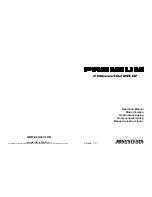
Measurement of Small-current Signals – Hints for System and Cell Design
78
includes a number of individually shielded wires contained within an overall shield. We pay careful attention to
issues such as shield isolation, isolation resistance, and capacitance.
If you do need a special cable, contact us with your requirements.
Lead Placement
Many experiments with the Reference 3000 involve cells with small capacitances, the value of which may be
important.
In these cases, the capacitance between the Reference 3000’s cell leads can result in an error. The Reference
3000 alligator clips can have 10 pF or more of mutual capacitance if they are run alongside each other.
If you wish to avoid excessive capacitance:
Place the leads as far apart as possible. Pay special attention to physical separation between the
working electrode/working sense leads and the counter/counter sense/reference electrode leads.
Have the leads approach the cell from different directions.
Remove the alligator clips from the leads. In extreme cases you can replace the banana plugs and pin
jack with smaller connectors. If you do so, be careful not to compromise the isolation between the
center conductor and the shield.
The cell leads must not be moved during an experiment measuring small currents. Both microphonic and
triboelectric effects can create spurious results when the cell cables are moved.
Cell Construction
If you need to measure small currents or high impedances, make sure that your cell construction does not limit
your response.
A cell where the resistance between the electrodes is only 10
10
Ω cannot be used to measure 10
13
Ω
impedances. In general, glass and PTFE are the preferred construction materials for cells. Even glass may be a
problem when it is wet.
You also must consider
C
shunt
. Make the “inactive” portion of your electrodes as small as possible. Avoid placing
electrodes close together or parallel with each other if you are measuring high impedances.
Reference Electrode
Keep your reference electrode impedance as low as possible. High-impedance reference electrodes can cause
potentiostat instability and excessive pickup of voltage-noise.
Try to avoid:
Narrow-bore or Vycor
®
-tipped Luggin capillaries.
Poorly conductive solutions, especially in Luggin capillaries.
Asbestos-thread and double-junction reference electrodes.
Reference electrodes often develop high impedances as they are used. Anything that can clog the isolation frit
can raise the electrode impedance. Avoid using saturated KCl-based references in perchlorate-ion solutions.
Instrument Settings
There are several things to remember in setting up a very sensitive experiment.
In EIS, use the largest practical excitation. Don’t use a 10 mV excitation on a coated specimen that can
handle 100 mV without damage.
Avoid potentials where large DC currents flow. You cannot measure 1 pA of AC current on top of 1
mA of DC current.
















































